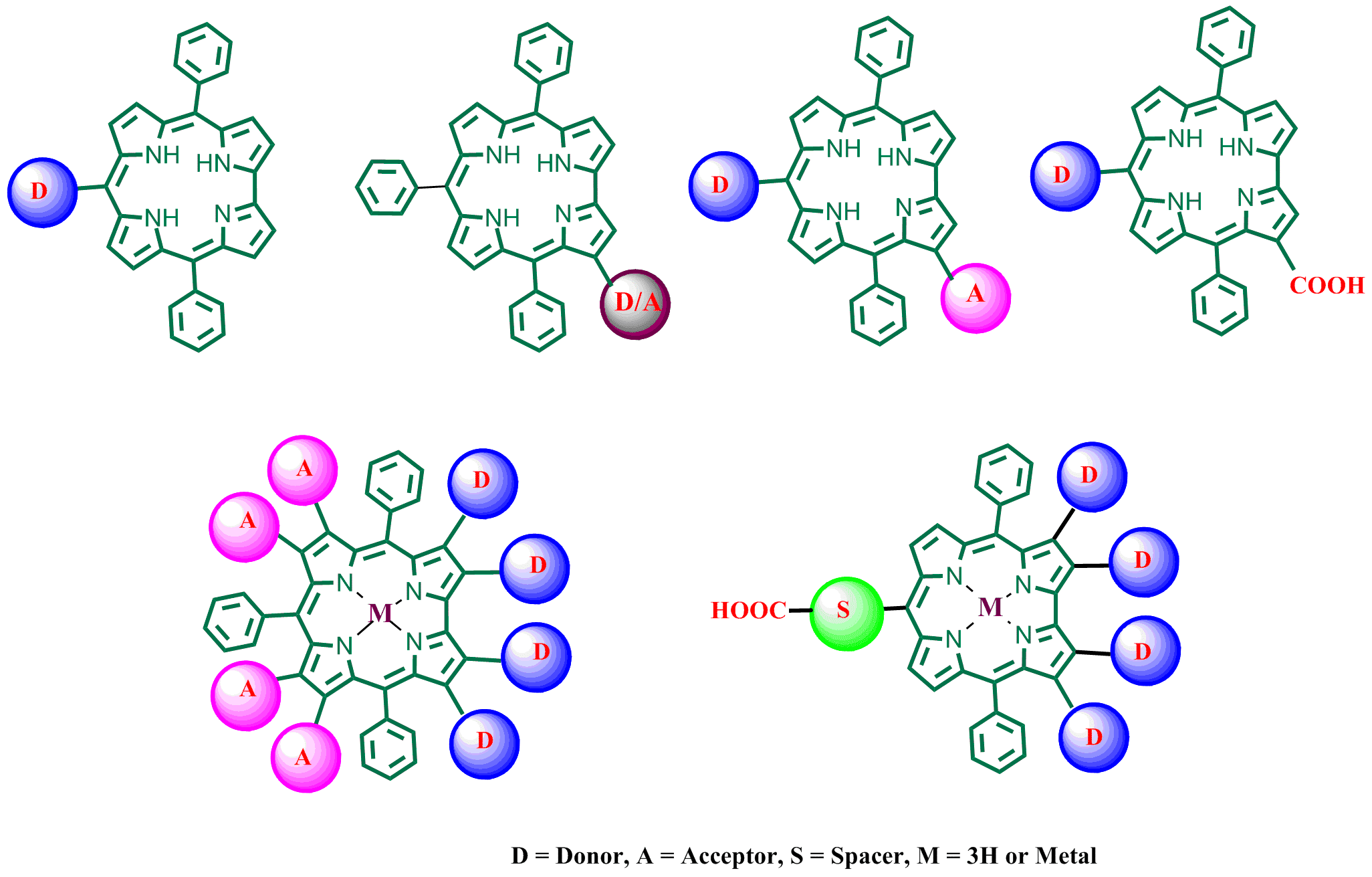
CORROLE BASED DONOR-ACCEPTOR SYSTEMS FOR DYE SENSITIZED SOLAR CELL (DSSC) APPLICATIONS
Corrole macrocycle has not much explored until 1999 due to lack of proper synthetic methods. During the new century corrole and its metal derivatives have been introduced into many applications that include catalytic oxidation, reduction and as group transfer reactions, as sensors and agents for photodynamic therapy and sensitizers in Dye Sensitized Solar Cells (DSSC). The goal of this research is to design the Donor-Acceptor (D-A) systems based on corroles as to gain better understanding of the initial events of natural photosynthesis.1 In addition to this, the information available on photoinduced reactions of these D-A systems will be applied for the design of sensitizers for DSSC applications.
We now presents our newest results on design and synthesis of corroles, substituted at their peripheral positions with either energy/electron donor or acceptor subunits including, (i) corrole based D-A Systems2,3 and,(ii) corrole based sensitizers for DSSC applications.4,5

References:
- Bai, Beeniston, R. W. Harrington, etc. Phys. Chem. Chem. Phys. 2012, 14, 4447-4456.
- Sudhakar, L. Giribabu, F. D’Souza etc. Chem.–An Asian J. 2015, 10, 2708-2719.
- Sudhakar, L. Giribabu, etc. J. Luminescence 2014, 153, 34-39.
- Sudhakar, L. Giribabu, P. Salvatori, F. De Angelis Phys. Stat. Sol., 2014 1-9.
- Walker, Z. Gross, J. Porphyrins Phthalocyanines 2006, 10, 1259-1262.
Powered by Eventact EMS